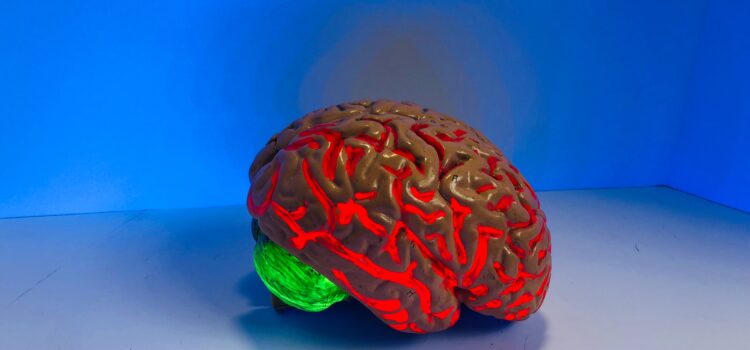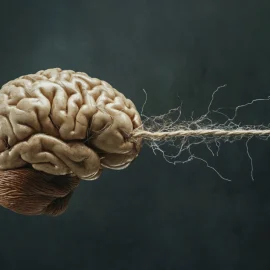

This article is an excerpt from the Shortform summary of "Brain On Fire" by Susannah Cahalan. Shortform has the world's best summaries of books you should be reading.
Like this article? Sign up for a free trial here .
What was the disease in Brain on Fire? How did the disease in Brain on Fire change Susannah’s behavior?
The disease in Brain on Fire is anti-NMDA-receptor encephalitis. It is a rare disease that was difficult to diagnose.
Read more about Susannah Cahalan and her journey to diagnose the disease in Brain on Fire.
Onset of the Disease in Brain on Fire
At 24 years old, Susannah Cahalan is an ambitious, dedicated reporter for the New York Post. She’s admired by her colleagues and respected by her editors. Like most 24-year-olds, she thinks nothing can go wrong with her vibrant, happy life.
Uncharacteristic Behavior
During the height of the Manhattan bedbug scare in 2009, Susannah finds two red dots on her arm. She’s convinced her apartment is infested, even though an exterminator says otherwise. Susannah doesn’t know she’s suffering from Ekbom syndrome, an obsession with bugs that can signal the onset of psychosis. This was the start of Susannah’s brain on fire symptoms.
A few days later, Susannah wakes up contentedly, alone in her boyfriend’s bed; Stephen’s a musician, and he’s already at rehearsal. They’ve only been dating a short time, but their relationship is trusting and comfortable. Suddenly Susannah is hit by another thought that’s completely out of character—an overwhelming compulsion to read his emails. Her paranoia was part of the brain on fire symptoms. She opens his computer and combs through his correspondence until she finds old messages from his ex. She digs through his dresser until she finds letters from ex-girlfriends.
Suddenly she sees herself in the mirror. The image disgusts her. She’s overcome by nausea and a migraine. Her left hand begins to tingle, then goes numb.
The tingling lasts for days, but Susannah is more worried by her uncharacteristic behavior than by her physical symptoms. She ignores the numbness until it moves down to her toes. She contacts her doctor, who refers her to Dr. Bailey, a famous neurologist.
Ineffectual Diagnoses
Bailey conducts a routine neurological exam and declares everything is normal. He prescribes an MRI, which comes back normal. Bailey suggests Susannah has a virus, possibly mono. She’s relieved to have a diagnosis. Her brain on fire symptoms were all over the place, so a virus was possible.
Susannah returns to work. When she pitches two more stories and they’re both rejected, she blames her poor performance on mono and takes another day off. Her doctor calls to tell her she doesn’t have mono after all.
That night marks a turning point. Stephen cooks Susannah an elaborate meal, but she can’t eat it. Her thoughts run wild. She paces and chain-smokes. She’s consumed by the desire to escape. She tries watching a TV show, then everything goes hazy. Susannah has her first seizure.
The Seizures Take Over
Susannah awakes in the emergency room. After conducting a series of tests, the hospital discharges her over Stephen’s objections. The following morning her mom and stepfather bring her to their home in New Jersey. Settling in, Susannah tries to work on an article for the Post, but she’s unable to write. A psychiatrist in their circle suggests that Susannah has bipolar disorder and is having a manic episode. Once again, Susannah is thrilled to get a diagnosis, however dire it is.
Susannah returns to the city under her father’s care. All’s well at first, but her paranoia soon returns. “They’re kidnapping me!” Susannah screams, convinced she isn’t safe with her father.
Convinced her father is going to kill her, Susannah runs to the front door of the brownstone and bangs her fists against the door, screaming, “Let me out!” When she hears her father coming, she locks herself in the bathroom.
That night Susannah’s parents agree that she must be admitted to a hospital, as long as it’s not a psych ward. Though Bailey is still convinced Susannah just drinks too much, he secures her a room at NYU Langone’s Advanced Monitoring Unit, with 24-hour EEG monitoring. As soon as they arrive at the hospital, Susannah has a seizure.
From here on in, Susannah has no memories of the next month. There will be no glimmers of the “I” she had been for twenty-four years. She is unable to access her rational consciousness, and the break with her self is complete.
As Susannah continues to deteriorate physically, her psychosis seems to recede. She spends most of her time staring into space. On her fifth day in the hospital, she’s given a spinal tap.
Susannah’s spinal tap shows an elevated number of white blood cells—usually a sign of infection or inflammation, indicating that Susannah’s problem is physiological rather than emotional in nature. The news finally gives Susannah’s mom a clue she can comprehend.
Diagnosing the Disease in Brain on Fire
Susannah’s team runs autoimmune tests and bloodwork. The tests come back negative. Similarly, her MRIs and CT scans are clean. Susannah’s doctors begin to wonder whether they’ll actually be able to figure out the disease in Brain on Fire.
Dr. Siegel, the world-famous neurologist, quits Susannah’s team. Unbeknownst to Susannah’s family, he asks Dr. Souhel Najjar to take on Susannah’s case. Najjar has a track record of diagnosing a number of mysterious diseases. Based on Siegel’s expert summary, Najjar suggests that Susannah might have viral encephalitis. He prescribes a second spinal tap and an antiviral drug, and tests Susanah for viral encephalitis. All the tests come back negative.
Najjar performs a number of tests and concludes that Susannah is “hellishly catatonic.” Then he has an idea: the clock test! He hands Susannah a sheet of paper and asks her to draw a clock. After numerous attempts, Susannah shows her picture to Najjar: She’s squished all the numbers into the right side of the circle. Najjar claps his hands, ecstatic. He understands that this is concrete evidence that the right side of Susannah’s brain is inflamed. When the right hemisphere is impaired, the patient will not “see” on the left side.
Suddenly Dr. Najjar has a flash of insight: what if Susannah’s inflammation is an autoimmune reaction? He recalls a paper describing four young women stricken by a rare autoimmune disease. Could Susannah have the same condition? He can only answer these questions by removing a tiny portion of Susannah’s brain for study.
Najjar sends Susannah’s cerebrospinal fluid to Dr. Dalmau, the neuro-oncologist who studied the four young women with a rare autoimmune disease. Dalmau confirms a diagnosis of anti-NMDA-receptor encephalitis, a disease caused by Susannah’s antibodies attacking her brain. Najjar puts Susannah on an aggressive treatment plan to treat the disease in Brain on Fire.

———End of Preview———
Like what you just read? Read the rest of the world's best summary of Susannah Cahalan's "Brain On Fire" at Shortform .
Here's what you'll find in our full Brain On Fire summary :
- How a high-functioning reporter became virtually disabled within a matter of weeks
- How the author Cahalan recovered through a lengthy process and pieced together what happened to her
- How Cahalan's sickness reveals the many failures of the US healthcare system






